There are hundreds of species of insects that can pose a plague and threat to your marijuana plants . Especially on hot dates like now, where their reproduction shoots up and they can easily invade us. Hopefully most that we can find may be harmless. However, there are some that can be very harmful to our cultivation so we must pay attention to take the appropriate measures to prevent and get rid of them. Some of the most common pests that can affect our indoor or outdoor cultivation of marijuana are: Thrips, whiteflies, mealybugs, aphids and leaf miners. Careful observation of your plants is crucial to detect any insects or anomalies before they can reproduce and become a plague. Many of the preventive remedies can be very useful for different pests so we recommend being cautious.
Trips in marijuana crops
Thrips are insects with 1 to 3 mm wings that lay eggs under leaves and feed on sap. There are several types of thrips, but the most common that can affect our cannabis plant is the Californian trip or western trip . The females lay eggs that will hatch in an environment with warm temperatures and medium humidity.
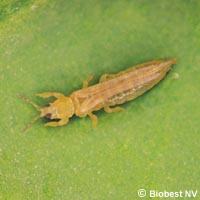
Trips. Biobest photography
How to see if we have TRIPS in our marijuana crop?
When sucking the food, thrips leave small spots and whitish spots on our cannabis plant, as if discolored, on the upper part of the leaf. If the pest is advanced, we can also see the wrinkled leaves, lacking in food.
How to remove them?
Pruning the lower parts of the marijuana plant will help prevent them, as this is where they settle. As biological phytosanitary products, we have natural pyrethrins or neem oil , which will help us to combat them as it hinders their development. It is also an antifungal that will help us fight against possible fungal pests as we have seen in previous articles. To warn us of the possible appearance of thrips in our cannabis cultivation, it is very common to place blue antitrips adhesive bands by the cultivated space that will quickly show us if we have these insects. We can introduce a biological predator most used to kill them for their species: the ambyseius cucumeris.
Aphid on cannabis plants
There are different types of aphids and they usually measure between 1 and 3mm. Like thrips and other insects, they feed on the sap and weaken our marijuana plant . Another factor that does not help us at all is that they reproduce very quickly and in a short time the plague can pose a strong threat. In spring and summer, the aphid population consists of viviparous females and their reproduction is asexual. So clones of the same mother reproduce and the same female can give life to 100 more aphids , creating a plague almost out of nowhere. They can also transmit viruses and many diseases.
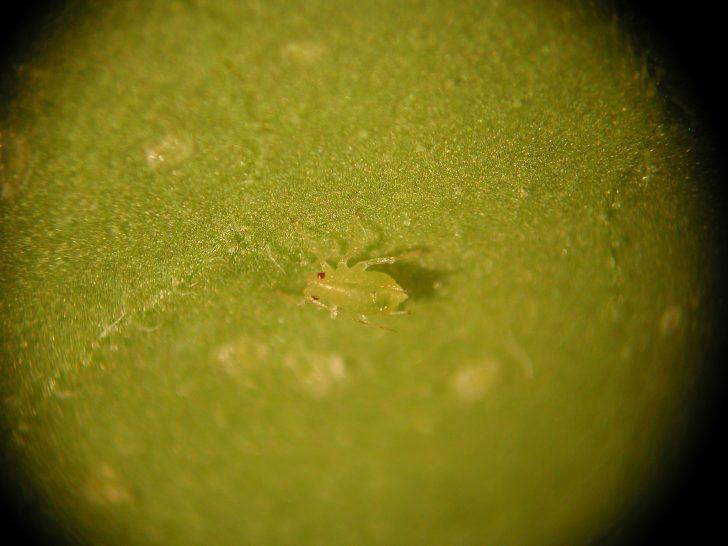
Aphid plague. Photograph by Biobest
How to see if we have APPS in our marijuana crop:
Aphids can be seen with the naked eye, they are not microscopic . If not, there are other signs that we can observe. By taking food away from the plant, this causes its growth to stop and leaves malformations or wilting. The insect releases the excess sugar from its diet creating the so-called molasses . With this, you will notice that the leaves of the marijuana plant are sticky due to this substance, they suffer and make the photosynthesis process difficult for them.
How to remove them?
If we want to fight this plague with a biological predator, we can go to Aphidius Aphidimyza, among others, we recommend that you ask in your grow shop . Anyway, we have already advanced that the predator will not be enough. As a biological insecticide against aphids we have: potassium soap, Neem oil or pyrethrins . There are also natural treatments such as rotenone , nettle or garlic broth. And if we are desperate, always consulting and with a certain time, we can resort to chemical insecticides with the Dimethoate component, effective against aphids.
Leaf Miners
Leafminers feed on the photosynthetic tissue of the marijuana plant, causing it to wilt and stunt growth. They are like tiny excavators who are making their little "mine" for the inside of the sheet. In addition, by piercing it, it leaves it exposed to other types of diseases.
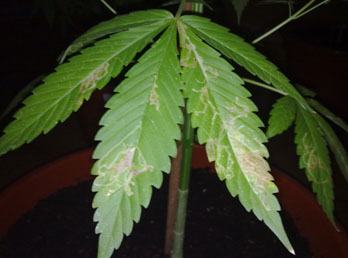 Leaf miners. Photo from LaMarihuana.com
Leaf miners. Photo from LaMarihuana.com
How to see if we have MINERS in our marijuana crop:
Its signs are very particular. The insect makes a hole to extract the sap and digs tunnels through the leaf. So we can see those galleries above the sheet, curved lines without color, of a duller tone, even whitish.
How to remove them?
It also has its respective biological predator to exterminate them: Dyglipus Isaea. To combat them we can do it with potassium soap or Neem oil . Some growers also tend to do a combination of both. Plucking the affected leaves of the marijuana plant would be the first thing. As they go inside the sheet, they are more protected and it will not affect them when we spray any product. So a good option would be to add Neem oil, for example in irrigation . Chemical type Rotenone can help us in cases more extreme, although it is always advisable to avoid them and in any case make sure that we are far from the flowering phase.
Whitefly on marijuana plants
Whitefly is a fairly common pest that tends to affect indoor and outdoor crops. It sucks the sap of the plant and leaves molasses that hinders the photosynthesis of the plant.
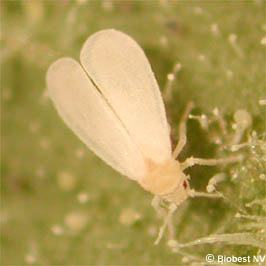 White Fly. Photograph by Biobest
White Fly. Photograph by Biobest
How to see if we have WHITE FLY in our marijuana crop:
They can be perceived, above all, if we move the sheets because they will fly away. The first damage that we can perceive is that the leaves take a yellow tone, they dry up until they fall. Apart from that, its molasses gives way to bold , a black fungus.
How to eliminate whitefly?
The potassium soap and the < b> Neem oil repeated as candidates. In this case, the natural remedies that can also be useful are infusions of Tansy or Wormwood . On the other hand, the typical yellow adhesive tapes are usually very useful because they attract many flying insects and so we can quickly see what pest It could stalk us.
Cochineal in marijuana crops
This type of pest occurs in hot and humid environments. We can find two types of mealybug: the normal and the cottony. The latter usually affects our marijuana plant more, especially in outdoor cultivation.
How to see if we have COCHINILLA in our marijuana crop:
It is usually seen with the naked eye how this plague sticks through the trunk . Leave a trail of white wax on the stems and knots of the leaves. It also expels its excess sugar in the form of molasses, which will make the plant sticky.
How to eliminate the mealybug?
The yellow sticky traps are useful for all pests of flying insects, like this case. If we have cochineal, we can remove it manually and use potassium soap . Neem oil is also important to prevent and to act on the eggs of this insect. If we still have to continue acting, we can apply pelitre and peritrin.
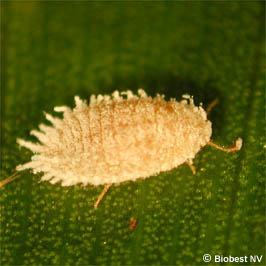
Cottony mealybug. Photograph by Biobest
If you want to know more about how to prevent other types of pests, we advise you to find out about: the spider mite , micro-mites , mushrooms and caterpillars .